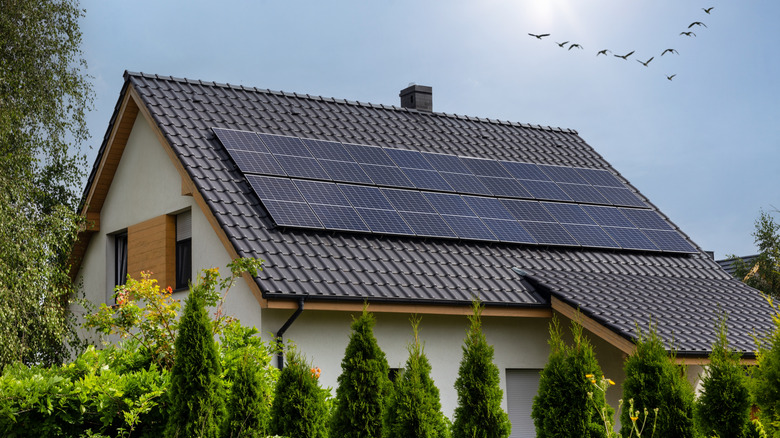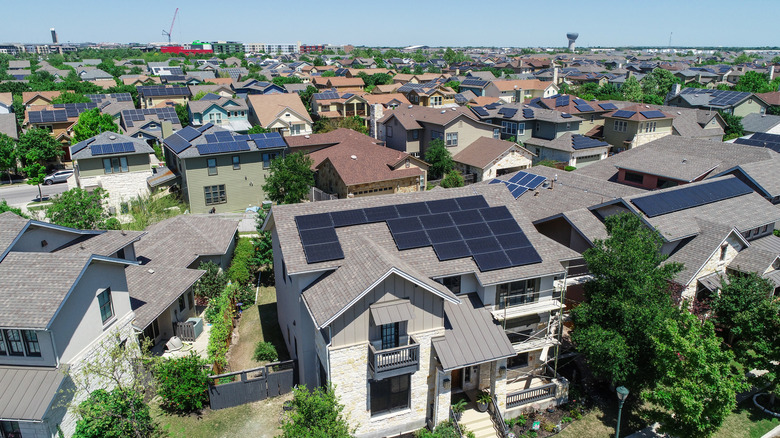What Is The 33% Rule For Solar Panels?
Anyone thinking of adding solar panels to their home has plenty of decisions to make before they begin the installation process. There are different types of solar panels, each with its own benefits and drawbacks. A typical household can save upwards of 90% on its electricity bill with solar panels. However, factors like the location and layout of an array can make a huge difference to their cost-effectiveness. If you're considering solar panels and want to generate as much power as possible, it might seem logical to try to cram as many panels onto your rooftop as possible. However, doing so might put you in breach of local or state planning laws, so it's always worth being aware of which laws are enforced in your area.
One of the most common rules in place is referred to as the 33% rule, and it dictates where you're allowed to place solar panels in relation to the edge of your sloped roof. Specifically, it refers to section 1204.2.1.2 of the International Fire Code, or IFC, which mandates at least an 18-inch (457 mm) setback along both sides of a horizontal ridge when photovoltaic arrays occupy less than 33% of the total roof area. If the array occupies more than 33% of the total roof area, the minimum setback width increases to 36 inches.
Are there any exceptions to the rule?
The setback is required to give firefighters access to the ridge of the roof, both to allow access to the property and to create smoke ventilation by cutting a hole in the roof. The rule remains in place for all areas that have adopted the fire code, but there is one exception within the guidelines.
Homes that have an automatic sprinkler system installed can install up to 66% of their total roof area with panels while only needing a setback of at least 18 inches. This setback is still required on both sides of the ridge. The sprinkler system must be installed according to IFC regulations in order to qualify for the reduced setback. For arrays that take up more than 66% of a roof's total area, the minimum 36-inch setback rule applies regardless of whether or not a sprinkler system is fitted.
The regulations also state that roofs with solar panel arrays should have at least two pathways between the lowest roof edge and the ridge, each measuring at least 36 inches wide. At least one of those pathways must be on the side of the roof facing the property's street or driveway.
Which states have adopted the rule?
Most states have adopted the International Fire Code as the guiding framework for their fire safety regulations. It's currently being used in 42 states, plus the District of Columbia, New York City, Guam, and Puerto Rico. As of January 2024, states that had not adopted the code included Colorado, Illinois, Michigan, and Texas, among others. However, local laws about solar panel placement may still apply, so it's best to double-check.
The world of solar energy is still full of myths and local and state laws can suddenly change. This may leave contractors and homeowners scrambling to adapt to the new rules. However, solar panels can still be well worth the hassle if you're looking to reduce your monthly energy bills or your carbon footprint. In certain areas, studies have shown that solar panels can also increase the value of your home, which should provide additional reassurance for buyers concerned about the initial costs of installation.


